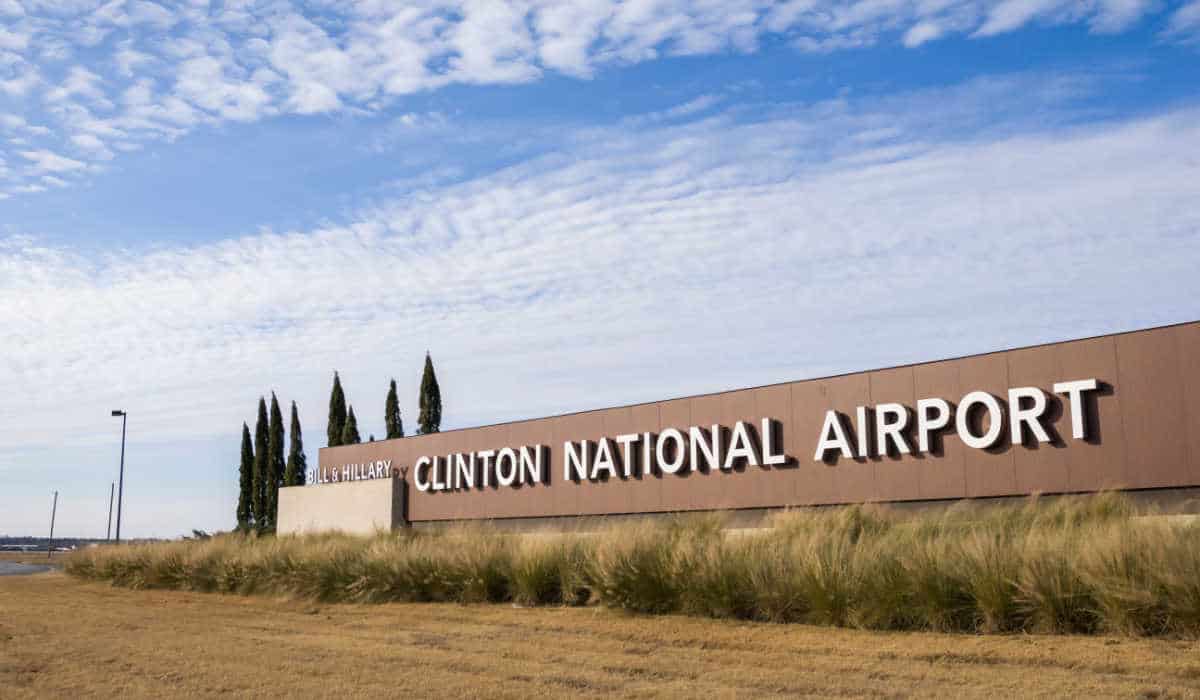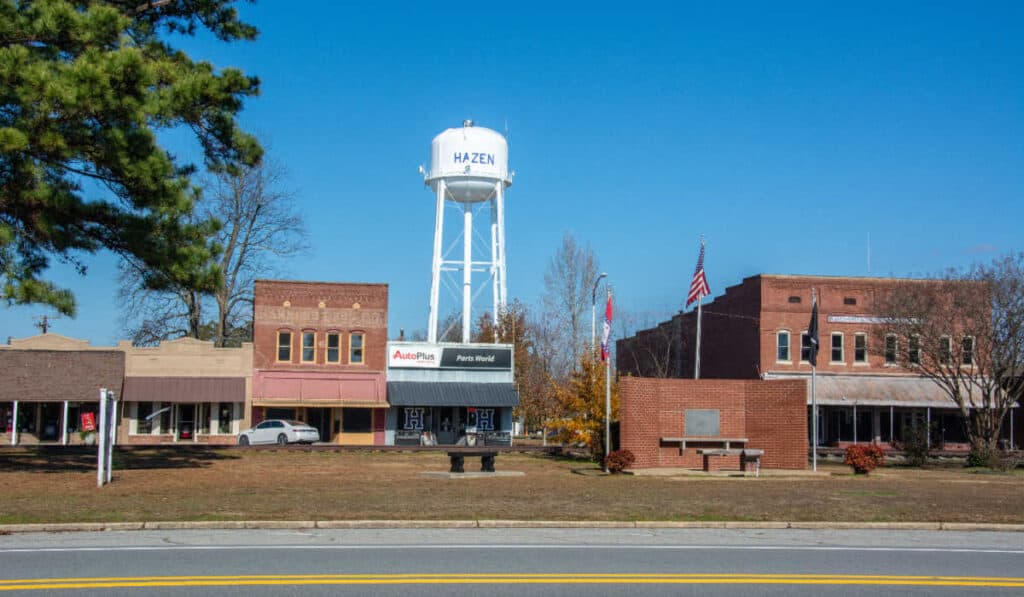Arkansas, a beautiful state located in the southern United States, is home to several airports that provide both local and international flight access to travelers. Some of these airports may be small and cater to specific needs, while others are larger and connect Arkansas to the rest of the world. It’s important for me to understand which airports are available in this state, as it can impact my travel plans and overall experience.
One of the most notable airports in Arkansas is the Bill and Hillary Clinton National Airport located in Little Rock. This airport serves as the state’s primary hub, offering flights to various destinations across the United States. Another major airport is the Northwest Arkansas National Airport in Fayetteville, which provides access to major cities all over the country with an average of 30 flights a day. My exploration of Arkansas’ airports reveals that they not only offer convenient travel options but also contribute to the state’s economy and development.
Basic Understanding of Arkansas Airports
I found that there are various airports in Arkansas, a state in the United States, which cater to the needs of passengers traveling to and within the state. While there is only one international airport, the rest are primarily domestic airports that efficiently handle daily direct flights from most major cities in the United States.
The Arkansas International Airport is the only international airport in the state, covering an area of 1,100 acres and having one runway designated 18/36 with a concrete surface. Besides the international airport, there is another major airport, Northwest Arkansas National Airport, which serves many passengers each year and hosts numerous airlines for regional routes.
Arkansas airports play a crucial role in supporting the state’s air traffic, accounting for around 0.22 percent of the total air traffic in the United States. The smallest airport among them is Memorial Field Airport (HOT), which serves approximately 4.7 thousand travelers every year. As these airports continue to operate, they help boost the state’s economy and provide reliable transportation options for the residents and visitors alike.
When visiting Arkansas, travelers can expect essential services and infrastructure in most of the state’s airports. They are well-managed, provide suitable facilities for passengers, and ensure smooth travel experiences for those coming to explore the beautiful state of Arkansas.
Major Airports in Arkansas
Arkansas Airports by City
In Little Rock, we have the Adams Field or Clinton National Airport which is a major airport in the state, serving a large number of passengers every year. Clinton National Airport offers various amenities for travelers, such as parking, dining, and shopping options.
Another significant airport in Arkansas is the Northwest Arkansas National Airport (XNA), located in the beautiful region of Northwest Arkansas. XNA serves as a vital connection to major cities across the United States. A variety of airlines operate at this airport, catering to the needs and preferences of travelers.
Fort Smith Regional Airport is another notable airport in Arkansas, providing both civil and military services. This airport is situated in Sebastian County and is operated by the Fort Smith Airport Commission. Passengers traveling through Fort Smith Regional Airport can expect to find essential amenities and services for a comfortable travel experience.
I hope this information has been helpful to you in understanding more about the major airports in Arkansas. If you require further airport locations and information within the state, consider visiting Flight Math to explore other smaller airports and their details.
Minor Airports in Arkansas
In addition to the major airports in Arkansas, such as Clinton National Airport (LIT) and Northwest Arkansas National Airport (XNA), there are several minor airports throughout the state. I’m going to cover some of the more prominent ones in this section.
Firstly, some minor airports around Arkansas include: Russellville Regional Airport, Dennis F. Cantrell Field, Walnut Ridge Regional Airport, West Memphis Municipal Airport, Batesville Regional Airport, and Harrell Field source. These airports play important roles in providing air transportation opportunities to local residents and businesses.
In the city of Bentonville, the Bentonville Municipal Airport is available for general aviation enthusiasts, with various aircraft parking facilities and runway lighting. Heading to Clinton, you can find the Clinton Municipal Airport, offering basic aviation services to better facilitate air travel for local residents.
For those in Fayetteville, the city’s Drake Field Airport provides air services and facilities for both business and leisure travelers. Blytheville is served by the Blytheville Municipal Airport, which also has basic facilities to support aviation activities in the region. Ozark also features a small airport, the Ozark Regional Airport, which houses a few aircraft and provides an active space for aviation enthusiasts to visit.
Moreover, Springdale is home to Springdale Municipal Airport, which operates mainly for general aviation flights. Calico Rock offers small-scale aviation services through the Calico Rock Airport for regional visitors who come to enjoy fishing on the iconic White River. Arkansas also features the El Dorado Downtown Airport in El Dorado, Hope Municipal Airport in Hope, and Horseshoe Bend Airport in Horseshoe Bend, each serving the local communities with air travel options.
Hot Springs area travelers can also utilize the Memorial Field Airport for their aviation needs. Other airports in Arkansas include Jonesboro Municipal Airport in Jonesboro, Magnolia Municipal Airport in Magnolia, Morrilton Municipal Airport in Morrilton, Mountain View Airport in Mountain View, Nashville Municipal Airport in Nashville, Pocahontas Municipal airport in Pocahontas, Rogers Executive Airport in Rogers, Siloam Springs Municipal Airport in Siloam Springs, Stuttgart Municipal Airport in Stuttgart, and Texarkana Regional Airport in Texarkana.
Finally, the Helena-West Helena area has access to the Thompson-Robbins Airport, which offers a variety of aviation services for the region. From small fields to sizeable regional airports, Arkansas is well-equipped with diverse minor airports to cater to a range of locations and aviation needs.
Non-Public and Specialty Airports
Arkansas is home to various non-public and specialty airports that cater to specific aviation needs. Located throughout the state, these airports can serve general aviation, local communities, and business purposes.
I would like to highlight a few of these airports, like Drake Field in Fayetteville, which serves as a general aviation facility and offers a center for private flights to the area. Similarly, Petit Jean Park Airport is a picturesque facility located at the top of Petit Jean Mountain, making it an attractive destination for pilots and aviation enthusiasts alike.
In the northern part of the state, Boone County Airport near Harrison is another general aviation airport that plays an essential role in supporting its community. Located in the beautiful Ozark Mountains, this airport has scenic surroundings that complement its functional benefits.
A few non-public airports can be found in various towns and cities, providing essential services for their communities. Airports in Almyra, Augusta, Bald Knob, Berryville, Booneville, Camden, Carlisle, Clarendon, and Clarksville cater to the private and local aviation needs of their respective areas.
Additionally, airports in Conway, Corning, Crossett, Danville, Dermott, Fordyce, Forrest City, Gurdon, Hampton, Hazen, Heber Springs, Holly Grove, and Huntsville provide valuable support for small aircraft operations and improve the quality of life for local residents and businesses.
And of course, there are numerous other non-public and specialty airports in communities like Lake Village, Malvern, Manila, Marianna, Marked Tree, Melbourne, Mena, Monticello, Mountain Home, Newport, North Little Rock, Osceola, Paragould, Piggott, Pine Bluff, Rector, Russellville, Salem, Searcy, Sheridan, Star City, Waldron, Walnut Ridge, Warren, and West Memphis. These airports continue to play an essential role in the Arkansas aviation industry.
In summary, Arkansas is well-equipped with an extensive network of non-public and specialty airports. These facilities serve the state’s smaller communities, general aviation, and business sector by providing crucial aviation infrastructure and support.
Conclusion
In my research on airports in Arkansas, I found that the state has a robust network of airports that contribute to its economic growth. Arkansas is home to several commercial airports, such as the Bill and Hillary Clinton National Airport and the Northwest Arkansas Regional Airport, which are crucial for transportation and business. These airports facilitate travel within the state and to other parts of the country, connecting Arkansas with the global market.
The state also has a substantial number of general aviation airports, reliever airports, and military airports that play a significant role in aviation across Arkansas. In addition to supporting thousands of jobs and generating billions in economic output, these airports serve the needs of various sectors, such as agriculture, emergency services, and defense. They also provide important infrastructure for pilot training, aircraft repair, and recreational flying.
I also discovered that there is a considerable need for investment in airport infrastructure to maintain these facilities and meet future demand. One source estimates that Arkansas airports will require over $526 million in investment between 2021 and 2025, with the potential to create thousands of additional jobs. Given the importance of aviation to the state’s economy, it is vital that these investments are made to ensure the continued growth and success of Arkansas’s airports.
As someone who has studied airports in Arkansas, I can confidently say that they play a pivotal role in the state’s economy and transportation network. It is crucial for stakeholders, including the government, local communities, and airport operators, to continue working together to support these valuable assets.







